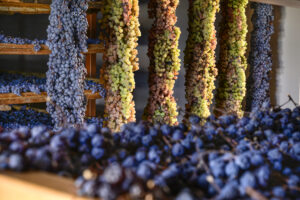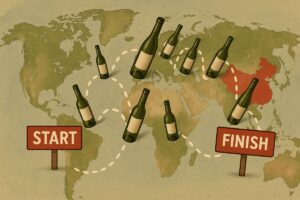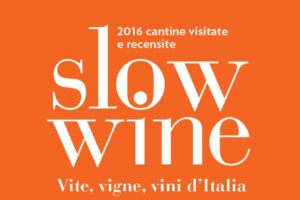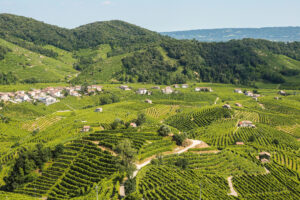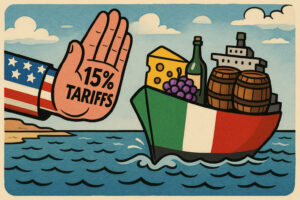Over the past several years, on the global level, in spite of some very scarce production years alternating with others that haven’t been excessively abundant, taking the averages of the last 5-10 years, wine produced has been much more than wine consumed. The most recent, complete data from the International Organization of Vine and Wine (OIV), led by Luigi Moio, published in spring 2022 (relative to 2021), revealed that 260 million hectoliters of wine were produced the world over, while consumption was 236 million hectoliters. The production figure is more or less the same for the 2022 estimates, which will be explored on April 20th, during the presentation of the OIV Report on the “State of the World Vine & Wine Sector”.
While waiting for the statistical numbers, the brutal truth is that there is too much wine in the world. Or rather, there is more supply than demand. Of course, this is in general terms, and obviously it does not apply to all areas around the world. As a matter of fact, some of the most famous territories, such as Champagne and Burgundy in France, or the Langhe in Piedmont, Bolgheri, Chianti Classico and Montalcino in Tuscany, Valpolicella in Veneto, Etna in Sicily, the Verdicchio area in the Marches, and the entire world of sparkling wines, from the Prosecco macrocosm, Franciacorta, Asti, Trentodoc and Altalanga, overall, do not appear to be experiencing any problems on the market. The situation is quite different, though, in Bordeaux, where, net of the positive results of the top Chateaux, the crisis of overproduction for lower-end wines has exploded over the past few months, as we have often reported. They have made structural requests, such as a plan to uproot 30.000 hectares, for which, however, there are not enough resources, at least according to the winegrowers. There are however, more emergency measures, such as crisis distillation, which France, through FranceAgrimer, has requested for 2.5 million hectoliters (mainly Languedoc, Occitania and Rhône, ed.), and the Ministry of Agriculture has developed a system in two tranches for a total of 80 million euros, financed through European funds (we are talking about 70 euros per hectoliter for PGI wines and 75 euros for PDO wines). But, Spain has also received a request from the "Cooperativas Agro-alimentarias de España", for the distillation of 3 million hectoliters, as we have reported here.
Among the three major production powers (which bring together over half of all the wine produced in the world), the only one where some representation of the supply chain has not (yet) asked for distillation, is Italy. Is this a sign that everything is fine? Not exactly. As we all know, exports in 2022 that set a record in value, reaching 8 billion euros, have now decreased, albeit by only a few decimal points. While on mass retail, after 2022 closed at -5.4% in volume for still wines and at -5% for bubbles, in the first quarter of 2023, according to CIRCANA (formerly IRI) data, the downward trend increased, and still wines registered -6.2%, while sparkling wines -0.5%. On the other hand, according to Cantina Italia data, published recently and updated to March 31, 2023, from the Telematic Register, there are 60 million hectoliters of wine in the Italian wineries, +5.1% compared to a year ago (even if stocks of musts dropped -9%, to 6.2 million hectoliters, ed.). This set of numbers describe a production system, as we mentioned above, where some territories and some companies are soaring on the markets, and other districts are in far from brilliant form. Even though no one may say so officially, the feeling that challenges in some less noble or prestigious denominations, are forthcoming, is evident. The WineNews Staff experienced the feeling first-hand at ProWein in Dusseldorf and at Vinitaly in Verona, during hundreds of meetings, chats and discussions with many producers. And, several studies have also confirmed it, especially on mass retail consumption, as families’ purchasing power is decreasing, while inflation continues to be high, so that wines, especially “entry level”, risk being cut out.
Up to now, however, at least in Italy, there is no talk about distillation. And, according to rumors WineNews has gathered there would seem to be two reasons. One, unlike France and Spain, where the bulk of the market is made up of a few, very large districts, and if they suffer, would plummet the sector in crisis, Italy is made up of many smaller territorial companies, with specific weights, and different volumes, which net of a few localized difficulties, would not mean problems on the National level. Secondly, in any case, the resources for distillation would be scarce and not resolve the problem.
The 323.8 million euros planned in the National Support Plan for the wine sector (coming from the CMO) in the 2023/2024 cycle, as a matter of fact, and this has been the case now for several cycles, provides only a minor part, equal to 19.2 million euros, for distillation, not for crisis purposes, but for the by-products of winemaking. The bulk of the amount, due to the Italian system’s precise choice (which up to now has paid off), is directed to “quality” and market measures, such as restructuring and conversion of vineyards (144.1 million euros), Promotion in Third Countries (98 million euros) and investments (57.6 million euros).
Furthermore, others have said that the request for a "crisis distillation" measure, in all likelihood, would mean drop in prices, especially of table wines (but not only), which are not experiencing a very flourishing moment. According to the ISMEA surveys, the prices of white table wines, in March 2023, are around 3.8 euros per hectograde, down -8.1% compared to March 2022, while reds are listed at 3.69 euros per hectograde, down even more: -18.9%. It is a complicated and very uncertain picture, therefore. It shows Italian wine, though far from being considered “seriously ill” - and it is not - is instead in a state of overall good health, perhaps suffering from some “localized ailments”, which should not be underestimated in the near future.
Copyright © 2000/2025
Contatti: info@winenews.it
Seguici anche su Twitter: @WineNewsIt
Seguici anche su Facebook: @winenewsit
Questo articolo è tratto dall'archivio di WineNews - Tutti i diritti riservati - Copyright © 2000/2025




















